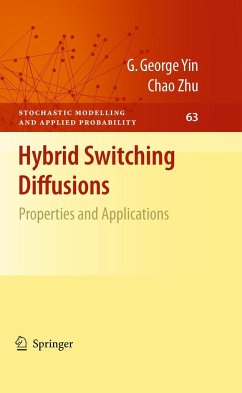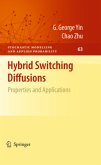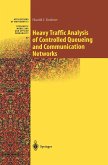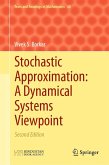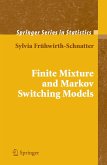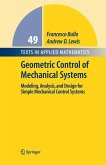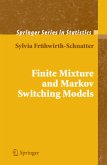This book focuses on switching diffusion processes involving both continuous dynamics and discrete events.
The first part, including three chapters, presents basic properties such as Feller and strong Feller, recurrence, and ergodicity. With a brief review of existence and uniqueness of solutions of switching diffusions, basic properties such as recurrence, Feller properties etc. are dealt with.
The second part of the book is devoted to numerical solutions of switching diffusions.
Containing three chapters, the third part focuses on stability. Chapter seven and chapter eight proceed with the stability analysis. The approach is based on Liapunov function methods.
For convenient references, an appendix including a number of mathematical preliminaries are placed at the end of the book. Topics discussed here including Markov chains, martingales, Gaussian processes, diffusions, jump diffusions, and weak convergence methods. Although detailed developments are often omitted, appropriate references are provided for the reader for further reading.
This book encompasses the study of hybrid switching di usion processes and their applications. The word hybrid" signi es the coexistence of c- tinuous dynamics and discrete events, which is one of the distinct features of the processes under consideration. Much of the book is concerned with the interactions of the continuous dynamics and the discrete events. Our motivations for studying such processes originate from emerging and - isting applications in wireless communications, signal processing, queueing networks, production planning, biological systems, ecosystems, nancial engineering, and modeling, analysis, and control and optimization of lar- scale systems, under the in uence of random environments. Displaying mixture distributions, switching di usions may be described by the associated operators or by systems of stochastic di erential eq- tions together with the probability transition laws of the switching actions. We either have Markov-modulated switching di usions or processes with continuous state-dependent switching. The latter turns out to be much more challenging to deal with. Viewing the hybrid di usions as a number of di usions joined together by the switching process, they may be se- ingly not much di erent from their di usion counterpart. Nevertheless, the underlying problems become more di cult to handle, especially when the switching processes depend on continuous states. The di culty is due to the interaction of the discrete and continuous processes and the tangled and hybrid information pattern.
The first part, including three chapters, presents basic properties such as Feller and strong Feller, recurrence, and ergodicity. With a brief review of existence and uniqueness of solutions of switching diffusions, basic properties such as recurrence, Feller properties etc. are dealt with.
The second part of the book is devoted to numerical solutions of switching diffusions.
Containing three chapters, the third part focuses on stability. Chapter seven and chapter eight proceed with the stability analysis. The approach is based on Liapunov function methods.
For convenient references, an appendix including a number of mathematical preliminaries are placed at the end of the book. Topics discussed here including Markov chains, martingales, Gaussian processes, diffusions, jump diffusions, and weak convergence methods. Although detailed developments are often omitted, appropriate references are provided for the reader for further reading.
This book encompasses the study of hybrid switching di usion processes and their applications. The word hybrid" signi es the coexistence of c- tinuous dynamics and discrete events, which is one of the distinct features of the processes under consideration. Much of the book is concerned with the interactions of the continuous dynamics and the discrete events. Our motivations for studying such processes originate from emerging and - isting applications in wireless communications, signal processing, queueing networks, production planning, biological systems, ecosystems, nancial engineering, and modeling, analysis, and control and optimization of lar- scale systems, under the in uence of random environments. Displaying mixture distributions, switching di usions may be described by the associated operators or by systems of stochastic di erential eq- tions together with the probability transition laws of the switching actions. We either have Markov-modulated switching di usions or processes with continuous state-dependent switching. The latter turns out to be much more challenging to deal with. Viewing the hybrid di usions as a number of di usions joined together by the switching process, they may be se- ingly not much di erent from their di usion counterpart. Nevertheless, the underlying problems become more di cult to handle, especially when the switching processes depend on continuous states. The di culty is due to the interaction of the discrete and continuous processes and the tangled and hybrid information pattern.
From the reviews: "The book Hybrid Switching Diffusions provides a remarkable coverage of up-to-date, cutting-edge research results on switching diffusions. ... As I read through the book, I was impressed by the vast number of topics covered as well as the level of technical details. ... provides a thorough, up-to-date development of regime-switching diffusions. It provides a valuable reference for applied mathematicians and control scientists. The book can also be useful to researchers in other application fields who seek suitable mathematical models that may fit their own systems." (Ruihua Liu, IEEE Control Systems Magazine, Vol. 30, October, 2010) "This book is written for scientists, engineers, and financial analysts interested in processes described by the coexistence of discrete events and continuous dynamics. Among the topics treated are existence and uniqueness of solutions of switching diffusion equations, regularity, well posedness, recurrence, ergodicity, stability, numerical methods, and two-time-scale processes." (IEEE Control Systems Magazine, Vol. 30, June, 2010)

